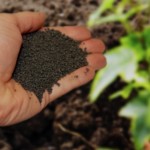Basil, with its aromatic leaves and delightful flavor, is a staple herb in many kitchens and gardens. Whether you’re an experienced gardener or just starting to cultivate your green thumb, knowing how often to water basil is crucial for its optimal growth and flavor. In this comprehensive guide, we’ll delve into the essential aspects of watering basil, helping you ensure your basil plants flourish and provide you with a bountiful harvest.
Understanding the Watering Needs of Basil Plants
Basil Varieties and Water Requirements
Before we dive into the watering specifics, it’s important to note that basil comes in various varieties, each with its own unique characteristics and water needs. Generally, basil can be classified into three main types: Sweet Basil, Thai Basil, and Holy Basil.
- Sweet Basil: This is the most common type of basil used in Mediterranean cuisine. It prefers consistently moist soil but does not tolerate waterlogged conditions.
- Thai Basil: Thai basil has a stronger flavor and is often used in Asian dishes. It also appreciates regular moisture but should not be overwatered.
- Holy Basil: In Ayurvedic medicine, Holy Basil holds a special place. It requires well-draining soil and moderate watering.
Factors Influencing Watering Frequency
Several factors come into play when determining how often to water basil:
- Weather Conditions: Hot and dry weather will necessitate more frequent watering, while cooler and more humid conditions might require less.
- Soil Type: Well-draining soil is essential for basil plants. Clayey soil retains more moisture, so be cautious not to overwater if you have this soil type.
- Pot Size: If you’re growing basil in containers, smaller pots may dry out more quickly than larger ones.
- Plant Size: Established and larger basil plants have a higher water requirement compared to younger ones.
Signs of Overwatering and Underwatering Basil
Overwatering Basil
While basil loves moisture, overwatering can lead to root rot and other issues. Here are some signs that your basil might be getting too much water:
- Yellowing leaves that are drooping or wilting.
- The appearance of mold or fungal growth on the soil surface.
- Foul odor coming from the soil.
Underwatering Basil
On the flip side, underwatering basil can cause it to become stressed and affect its growth. Look out for these signs of underwatering:
- Leaves that are dry, crispy, or curling at the edges.
- Drooping leaves that don’t perk up after watering.
- Stunted growth and slow development.
Proper Watering Techniques for Basil
Timing and Frequency
The key to successful basil cultivation is to maintain consistent moisture without allowing the roots to sit in standing water. Here’s a watering guideline to follow:
- Newly Planted Basil: Water the plant immediately after transplanting, and then water whenever the top inch of the soil feels dry to the touch.
- Established Basil: As a general rule, water your basil every 2-3 days. Adjust the frequency based on the factors mentioned earlier.
Watering Methods
- Soaker Hose or Drip Irrigation: These methods deliver water directly to the soil, minimizing water contact with the leaves.
- Watering from Below: Set the container in a shallow tray of water and allow the plant to soak up water from the bottom.
Avoiding Common Watering Mistakes
- Don’t Follow a Strict Schedule: Adjust your watering routine based on the specific needs of your basil plants and the environmental conditions.
- Morning Watering: Water your basil in the morning to give the leaves time to dry before nighttime. This helps prevent fungal issues.
FAQs about Watering Basil
Q1: Can I use a spray bottle to water my basil plants?
Yes, you can use a spray bottle to mist the leaves of your basil plants. However, avoid getting the leaves excessively wet, especially in the evening, to prevent fungal growth.
Q2: How do I know if my basil is getting enough water?
Check the moisture level of the soil by inserting your finger about an inch deep. If it feels dry, it’s time to water. Additionally, observe the appearance of the leaves for signs of wilting or curling.
Q3: Should I fertilize my basil when I water it?
It’s a good practice to occasionally fertilize your basil, but avoid overdoing it. Use a balanced liquid fertilizer every 2-3 weeks during the growing season.
Q4: Is it better to underwater or overwater basil?
It’s best to maintain a balance. While basil prefers moisture, it can suffer from both overwatering and underwatering. Consistency is key.
Conclusion
In the world of herbs, basil holds a special place with its rich aroma and versatile culinary uses. To ensure your basil plants thrive, understanding their watering needs is paramount. By paying attention to the factors that influence the watering frequency and adopting proper watering techniques, you’ll be well on your way to cultivating healthy and vibrant basil plants that enhance your dishes and delight your senses. Remember, it’s a harmonious dance between moisture and care that will lead your basil plants to flourish in your garden or on your windowsill. Happy gardening!






